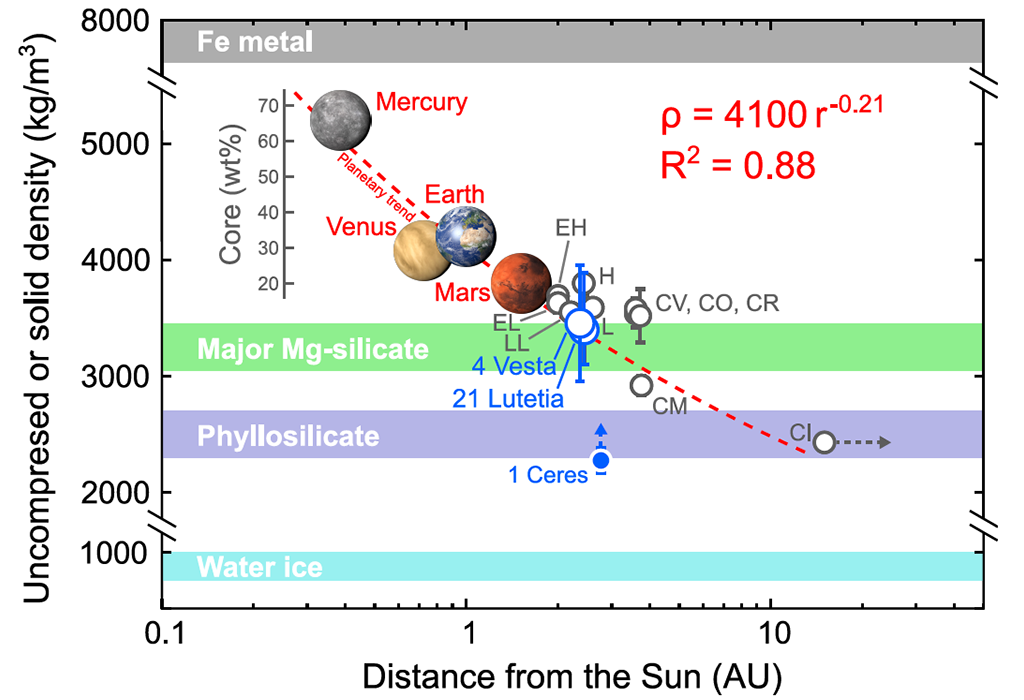A research team from the Earth Sciences Department within the Graduate School of Science at Tohoku University, including William F. McDonough, Dr. Takashi Yoshizaki, and others announced their theory that "based on the modeling of the chemical composition of rocky planets and the variety of densities of rocky objects in the solar system, the density difference between these objects was brought about by the magnetic field derived from the sun." Among the planets of the solar system, Mercury, Venus, Earth, and Mars are called rocky planets, which, as their name suggests, mainly consist of rock. The interior of a rocky planet has a structure in which the mantle and crust that are mainly comprised of oxides, cover the circumference of the central metal core. Among these planets, Mercury has a high density and Mars has a low density. The reason for this density difference is not well understood.
The origin of the high density of Mercury has attracted particular interest. Previous theories stated that the rock layer on the surface of Mercury was stripped off by the impact of celestial bodies, increasing the proportion of the metal core that comprises the planet. However, the U.S. National Aeronautics and Space Administration (NASA) MESSENGER mission in the early 2010s revealed that the surface of Mercury consists of rocks containing highly volatile elements. These volatile elements are easily lost due to celestial body impacts. This meant that it was necessary to reconsider the conventional formation theory for Mercury.
The research team found that the proportion of metal in the rocky material decreased as a function of distance from the sun. A strong magnetic field was generated by the sun in the protoplanetary disk that existed at the earliest stage of our solar system. The closer to the sun, the stronger the magnetic field became. The stronger the magnetic field, the easier it was for metals to be selectively incorporated into celestial bodies. Based on these findings, the research group proposed the theory that the density difference among rocky objects in the solar system was caused by the magnetic field of the sun. With this theory, issues that could not be explained by the conventional theory, such as the chemical composition of the surface layer of Mercury and the density distribution of rocky objects in the solar system, including asteroids, can be comprehensively explained.

Credit: Tohoku University
According to Dr. Yoshizaki: "Based on the chemical modeling of rocky objects in the solar system, we announced the theory that the amount of metal in the object reflects the strength of the magnetic field derived from the sun. The size of the metal core, which influences the generation of planetary magnetic fields such as the one that protects the Earth's surface from harmful cosmic rays, reflects the solar magnetic field, which decreases as the distance from the sun increases. These results are expected to contribute to the understanding of the conditions under which life is formed on viable celestial bodies."
This article has been translated by JST with permission from The Science News Ltd.(https://sci-news.co.jp/). Unauthorized reproduction of the article and photographs is prohibited.




